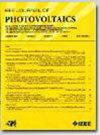Thermal Expansion Behavior of a Thermoplastic Polyolefin for Photovoltaic Application Over Hygrothermal Aging
IF 2.5
3区 工程技术
Q3 ENERGY & FUELS
引用次数: 0
Abstract
The thermal expansion behavior of polymers is a crucial property for manufacturing photovoltaic (PV) modules. The thermal expansion mismatch between the different module components induces residual stresses in the structure after manufacturing. Some of them are located at the interface between materials, leading to delamination and reliability issues during the PV module lifetime. For tandem applications, the thermal expansion mismatch is also an issue since it leads to the separation between the bottom and top cells. In this article, the thermal expansion behavior of a thermoplastic polyolefin (TPO) encapsulant used in the PV industry is assessed by stereo digital image correlation. This contactless method measures the thermal expansion in the two directions of the polymer thin film. The method is accurate enough to capture transition phases of the material, namely the crystallites fusion and formation. The thermal expansion behavior of the TPO thin film is shown to be anisotropic and dependent on its thermal history. The material contracts when heated, both after manufacturing and after aging; this has not yet been investigated. The aging temperature has an influence on the thermal contraction temperature but does not erase the shrinking behavior. The thermal expansion behavior is explained by a microstructural approach. The microstructure is investigated by differential scanning calorimetry. After crystallites melting, the molecular mobility and residual internal stresses account for the observed shrinking behavior. This behavior may affect the reliability of PV modules through delamination, cells cracks, or separation of the top and bottom cells.光伏用热塑性聚烯烃在湿热老化过程中的热膨胀行为
聚合物的热膨胀行为是制造光伏(PV)组件的关键特性。不同模块组件之间的热膨胀不匹配会在制造后的结构中产生残余应力。其中一些残余应力位于材料之间的界面上,从而导致分层,并在光伏组件的使用寿命期间产生可靠性问题。对于串联应用,热膨胀不匹配也是一个问题,因为它会导致底部和顶部电池之间的分离。本文通过立体数字图像相关性评估了光伏行业使用的热塑性聚烯烃 (TPO) 封装材料的热膨胀行为。这种非接触式方法可测量聚合物薄膜在两个方向上的热膨胀。该方法的精确度足以捕捉到材料的过渡阶段,即晶体的融合和形成。热塑性烯烃薄膜的热膨胀行为被证明是各向异性的,并取决于其热历史。无论是在制造后还是老化后,材料在加热时都会收缩;这一点尚未得到研究。老化温度对热收缩温度有影响,但不会消除收缩行为。热膨胀行为可以用微观结构方法来解释。微观结构通过差示扫描量热法进行研究。晶粒熔化后,分子流动性和残余内应力解释了观察到的收缩行为。这种行为可能会通过分层、电池裂缝或上下电池分离影响光伏组件的可靠性。
本文章由计算机程序翻译,如有差异,请以英文原文为准。
求助全文
约1分钟内获得全文
求助全文
来源期刊

IEEE Journal of Photovoltaics
ENERGY & FUELS-MATERIALS SCIENCE, MULTIDISCIPLINARY
CiteScore
7.00
自引率
10.00%
发文量
206
期刊介绍:
The IEEE Journal of Photovoltaics is a peer-reviewed, archival publication reporting original and significant research results that advance the field of photovoltaics (PV). The PV field is diverse in its science base ranging from semiconductor and PV device physics to optics and the materials sciences. The journal publishes articles that connect this science base to PV science and technology. The intent is to publish original research results that are of primary interest to the photovoltaic specialist. The scope of the IEEE J. Photovoltaics incorporates: fundamentals and new concepts of PV conversion, including those based on nanostructured materials, low-dimensional physics, multiple charge generation, up/down converters, thermophotovoltaics, hot-carrier effects, plasmonics, metamorphic materials, luminescent concentrators, and rectennas; Si-based PV, including new cell designs, crystalline and non-crystalline Si, passivation, characterization and Si crystal growth; polycrystalline, amorphous and crystalline thin-film solar cell materials, including PV structures and solar cells based on II-VI, chalcopyrite, Si and other thin film absorbers; III-V PV materials, heterostructures, multijunction devices and concentrator PV; optics for light trapping, reflection control and concentration; organic PV including polymer, hybrid and dye sensitized solar cells; space PV including cell materials and PV devices, defects and reliability, environmental effects and protective materials; PV modeling and characterization methods; and other aspects of PV, including modules, power conditioning, inverters, balance-of-systems components, monitoring, analyses and simulations, and supporting PV module standards and measurements. Tutorial and review papers on these subjects are also published and occasionally special issues are published to treat particular areas in more depth and breadth.
 求助内容:
求助内容: 应助结果提醒方式:
应助结果提醒方式:


